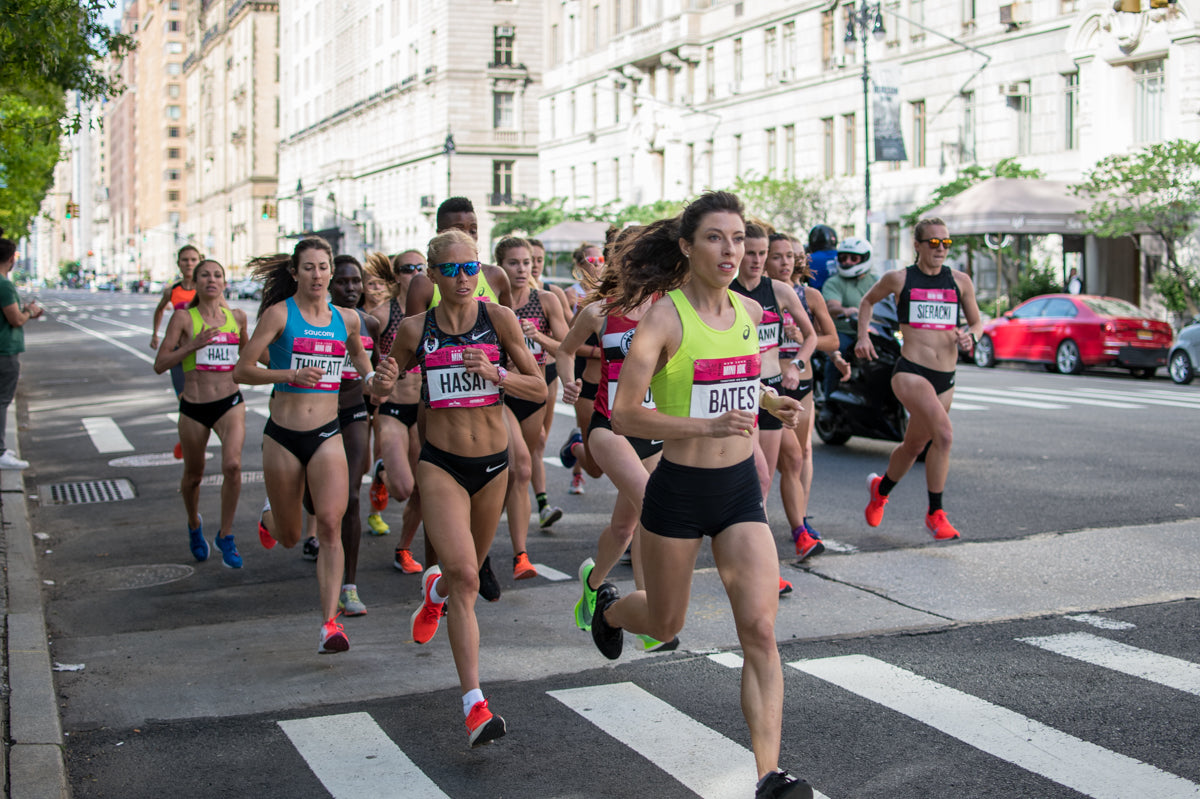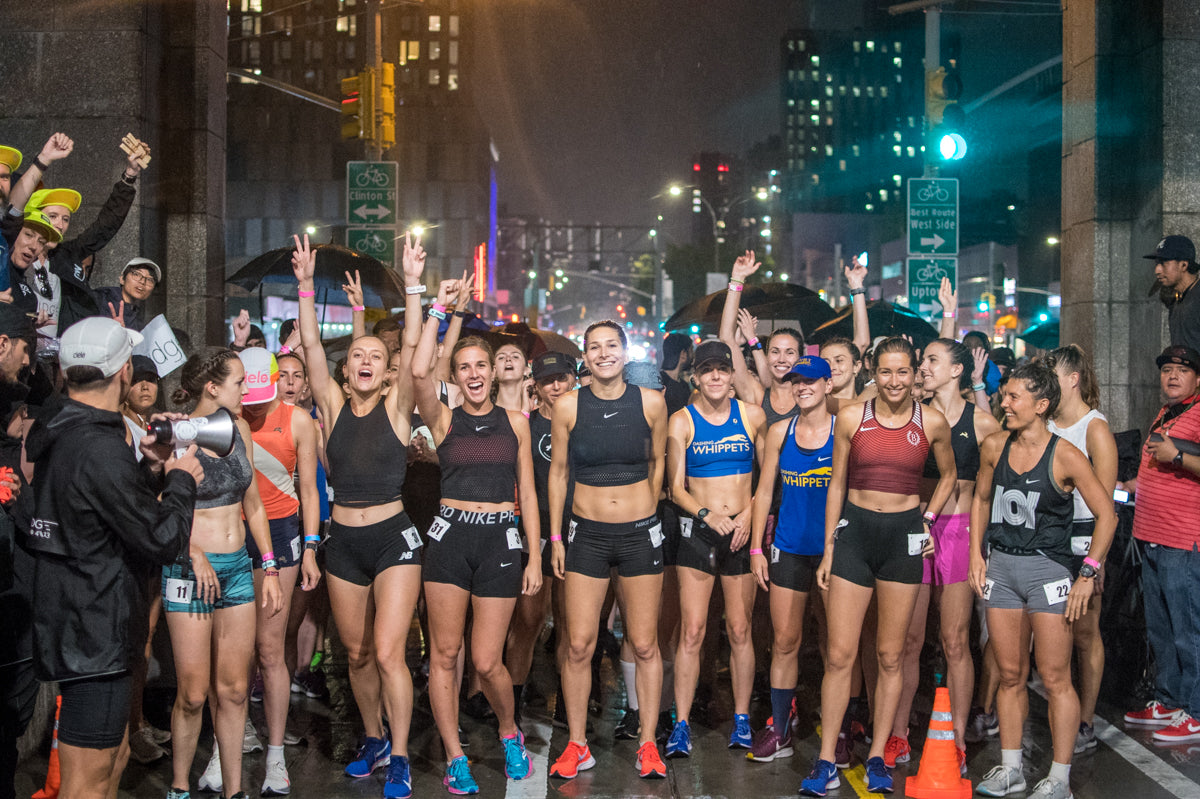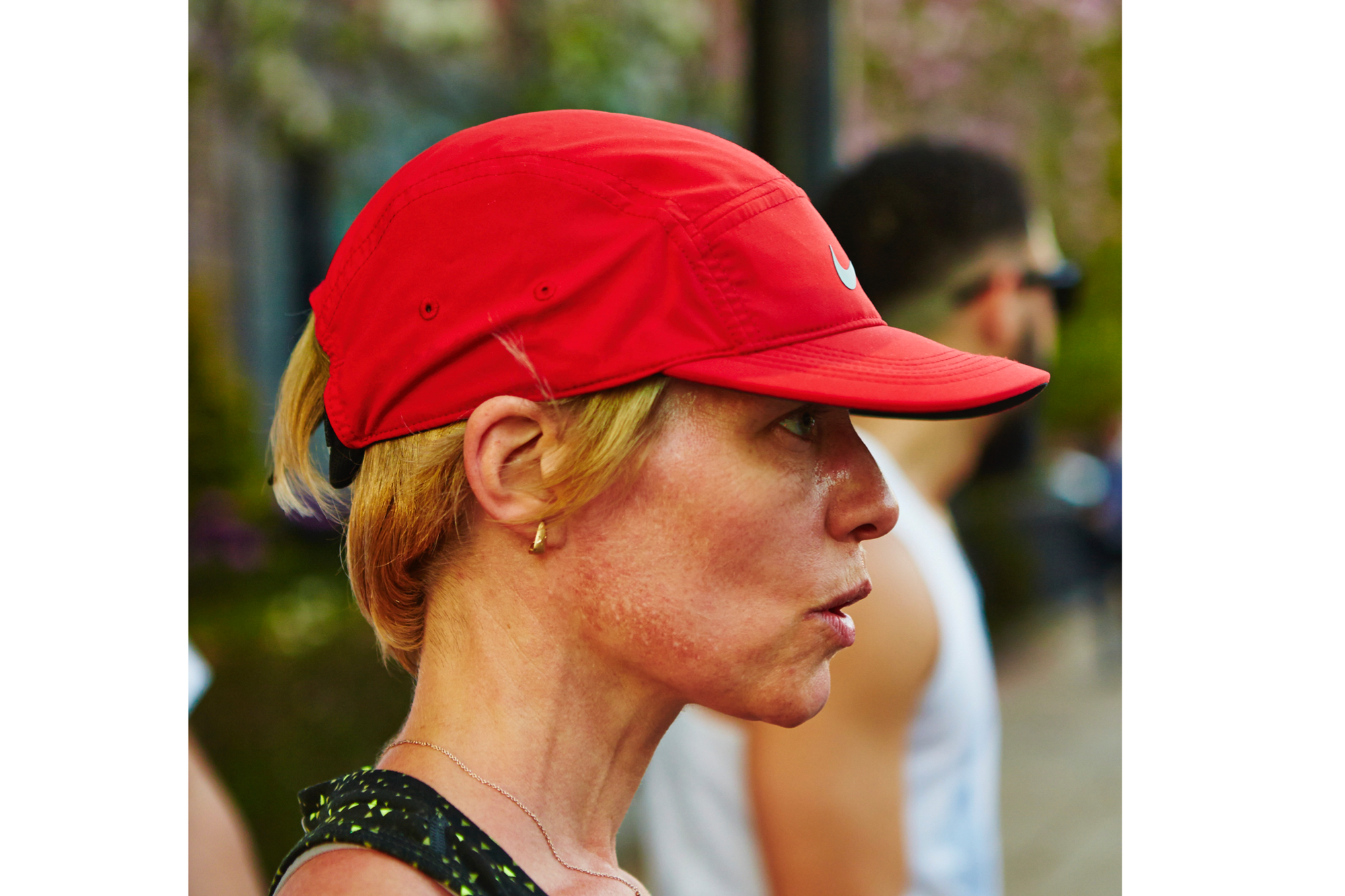Less than 50 years ago, on June 3rd, 1972, The Road Runners’ Club of New York hosted the first all-women’s road race in the US. The Crazylegs Mini-Marathon was largely conceived as a publicity stunt by Fred Lebow--one that featured Playboy Bunnies in running shoes--and which was sponsored by a new (pink) shaving cream product for women. Entrants were encouraged to wear miniskirts, and much of the publicity leading up to the event would fall under the category of “sex sells.” At a pre-race event, a reporter asked Kathrine Switzer to hike up her skirt to show off her legs. She declined.
None of this would seem to set the stage for a watershed moment in women’s athletics, yet for the 78 women at the starting line that day, it was a celebration of freedom. For the first time in history, women would be running a race of their own, not hiding from race officials under headwear and loose clothing, or fighting the sport’s governing bodies for their right to run more than a few laps of a track. For one warm morning in June, the 6-mile Central Park loop was theirs to run.
It’s hard to appreciate just how different the landscape of women’s running was in 1972, but the shift was already in motion that spring. In 1971, New York athlete Nina Kuscsik attended the national conference of the Amateur Athletic Union and submitted a proposal to lift the ban preventing women from racing in events over five miles. Women were, of course, already running in events longer than the sanctioned distances. Roberta Gibb had banditted (and completed) the Boston Marathon in 1966, and the following year the runner registered as K.V. Switzer was nearly forcibly removed from the course by a race official.
In the aftermath of Katherine Switzer’s famous finish and immediate expulsion from the AAU, many race directors began inviting female runners to run for unofficial times and trophies. AAU regulations classified races that included women--even unofficially--as “contaminated,” however, and any athletes participating risked being barred from future events. The ban was finally overturned thanks to Kuscsik’s lobbying, and women were allowed to compete in races up to 10 miles, provided that the women started separately and did not directly race against men. The decision also allowed “certain women” to participate in marathons with AAU approval. Kuscsik herself became the first female winner of the Boston Marathon in April of 1972.
Fred Lebow, the newly elected president of the Road Runners’ Club of New York City, saw an opportunity in the inclusion of women in his races. As a result of the AAU ruling, Lebow had been approached by the Johnson Wax company to create a women’s marathon as a promotion for their new women’s shaving cream. The marathon distance was determined to be impractical, but the team of Lebow, Switzer, and Kuscsik conceived of a six-mile women’s “mini-marathon” that could be held in Central Park.
While the publicity surrounding the Crazylegs Mini-Marathon focused on mini-skirts, Lebow and the team also made sure that the handful of prominent female distance runners scattered across the country were invited to compete head-to-head in the first women’s race of its kind. Despite Lebow’s hype for the Mini, however, the event drew little interest, and there were fewer spectators than runners in attendance. In the early 1970s, female runners were an unusual sight, and while the women themselves were enthusiastic, the public seemed unsure how to react to the competition. The New York Times article reporting the Mini noted not only the top finishing times but also the observation that Mrs. Kathy Miller of Syracuse (nee Katherine Switzer) finished in sixth place and had difficulty with her eye shadow smearing.
The pressure from women for equal access to athletics continued to increase, however, and less than three weeks after the first Mini, the Education Amendments of 1972 were signed into law. Their Title IX clause guaranteed that “No person in the United States shall, on the basis of sex, be excluded from participation in, be denied the benefits of, or be subjected to discrimination under any education program or activity receiving Federal financial assistance,” and resulted in the creation and funding of women’s sports teams in schools and universities across the country. A further stride in women’s running was made in the fall of 1972, when the six female entrants of the New York City Marathon sat down at the start line, protesting the AAU rule that required women to start separately from men. This time, the New York Times race coverage would feature the women’s protest and athletic achievement, and made no mention of makeup mishaps. The AAU also took notice of the protest, overturning the separate-start rule shortly after the marathon and finally allowing women to run alongside men.
This Saturday, Central Park again belonged to the ladies, including a deep professional field competing for the USATF 10K National Championship. Today we remember the women of 1972 who got us to the start line. The future is female runners.

Congratulations to all the NYRR Mini 10K finishers and especially to Sara Hall on her photo finish win! Here is the album from our afternoon!
Standing on the sidelines, snapping as many photos as we could, one thing was quite clear through our viewfinder—the future is now. #thefutureisfemale
(Note: The ~70 photos may take a few seconds to load.
Photos by Matt VosBurgh
Powered by flickr embed.

